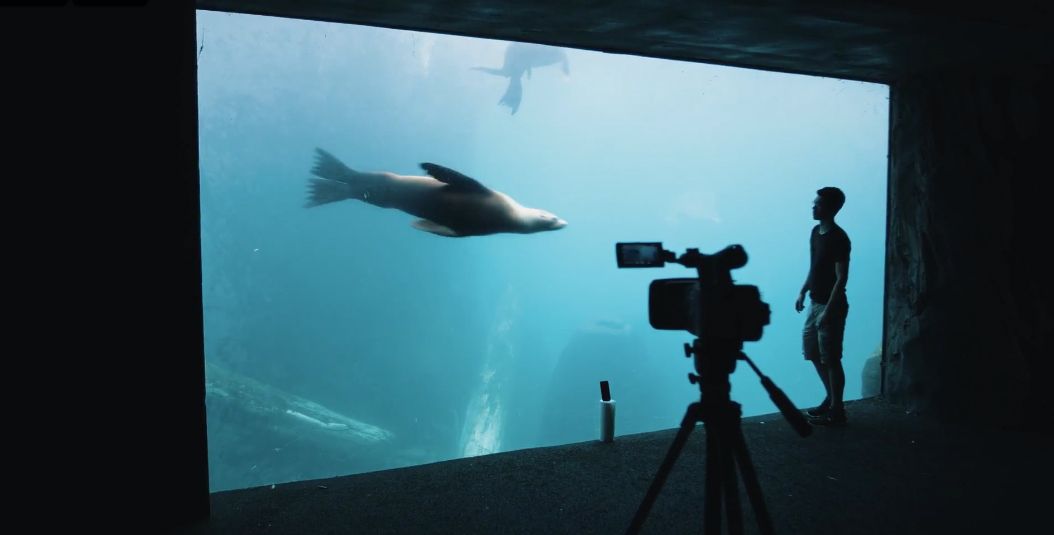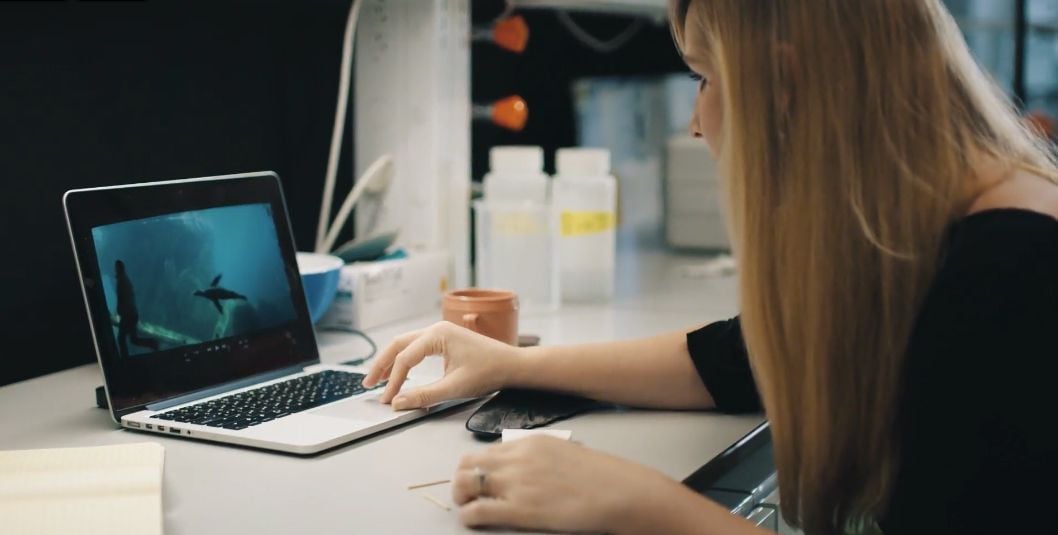When a Trip to the Zoo Resulted in an Engineering Breakthrough
Megan Leftwich, an engineering professor at George Washington University, is building a robotic flipper based on her observations of sea lions
Most people don’t think about fluid dynamics when it comes to childbirth. But Megan Leftwich does.
The professor of mechanical and space engineering at George Washington University in Washington, D.C. studies biologically inspired flows, such as the mechanisms that enable fish to swim or the interaction between fluids and other forces as a baby passes through the birth canal.
After observing the swimming patterns of sea lions during a family trip to the Smithsonian National Zoo, Leftwich began to think about sea lions’ method of swimming with their front flippers rather than their hind flippers. The mammals are efficient swimmers and produce almost no wake. In collaboration with the National Zoo, Leftwich filmed the sea lions, traced the graceful claps of their flippers and designed a robotic flipper that replicates the movement. She hopes to have a working prototype by the end of the summer.
The robotic flipper follows in a long line of inventions inspired by nature. Engineer George de Mestral studied the spiky head of a burdock plant under a microscope and patented Velcro in 1955. And, more recently, the sheen of butterfly wings inspired a screen for e-readers. Evolution has already solved many of the problems we encounter, in one way or another, for other living things.
Ultimately, Leftwich envisions unmanned vehicles with robotic flippers instead of propellers that could do things like explore underwater minefields without creating large disturbances that set off live bombs and research vessels so efficient that they could travel great distances on one battery.
How does nature inspire you?
I’m so inspired by the natural world because we live in it and we see it all the time. It’s really easy for me to see leaves blowing in the wind and then think ‘Huh, I wonder how much force that leaf can take before it gets ripped off?’ These questions, I can live them to some extent, and so I can always be seeing something new to explore. I am fascinated by the way that the natural process, that evolution has found so many solutions to so many different problems. If I can see a way that that solution, whether its how the shape of a flower or grass growing in a certain direction interacts with the fluids around it, then I can investigate a problem.
Why do you study organisms that swim?
A lot of fish just swim by flapping their caudal fin, but dolphins and whales flap it up and down. Squids and jellyfish contract their bodies and shoot out a jet, and sea snakes move their whole body up and down. So even just this one idea of moving through water, we already have so many solutions. I was really interested in what’s the fundamental connection between all of those solutions.

Can you describe the maneuvers that sea lions make?
Sea lions are great swimmers. They’re very agile and they’re very playful, so they can do things like really tight bank turns where they’re going forward and all of a sudden they’ll kind of turn up and do 180 degrees in a very tight radius. If they’re going forward and all of a sudden they want to see something behind them, they’ll pull their head up and actually just do a backflip and go in the other direction. They’ll do barrel rolls and spin with their nose as the axis. They’re extremely agile.
Because they’re swimming with their fore flippers as opposed to their tails, they don’t create the typical wake that you expect to see behind a fish, a dolphin or a whale. And if we understand how they do that and we can build that into an unmanned vehicle, for example, we could create a vehicle that’s much harder to detect in the water, something that’s hydrodynamically quiet.
What was it like to meet the sea lions at the National Zoo?
Not that many people get the opportunity to pet a sea lion. I thought they’d be slimy, but they weren’t. It was sort of like a wet Doberman pinscher.
Having worked with sea lions for almost two years, getting to actually meet one and touch it and see what sea lions’ fur feels like was really enlightening and added a depth of understanding to this problem that we study on a computer screen or through at least six inches of glass.

Do you consider yourself an innovator?
I’m not always solving a problem at hand, but I really do believe that I’m solving the problems of the future. I think that this knowledge base is going to translate to solutions to problems that we don’t even know we have, or that we know we have and aren’t interested in solving right now. Maybe the high rate of surgical deliveries in our country is not a big problem, but it a problem, and if we had a better solution, wouldn’t that be wonderful? I definitely think a lot of what I do is look for fundamental physics where people don’t think it exists.
/https://tf-cmsv2-smithsonianmag-media.s3.amazonaws.com/accounts/headshot/DSC_0154.JPG.jpeg)